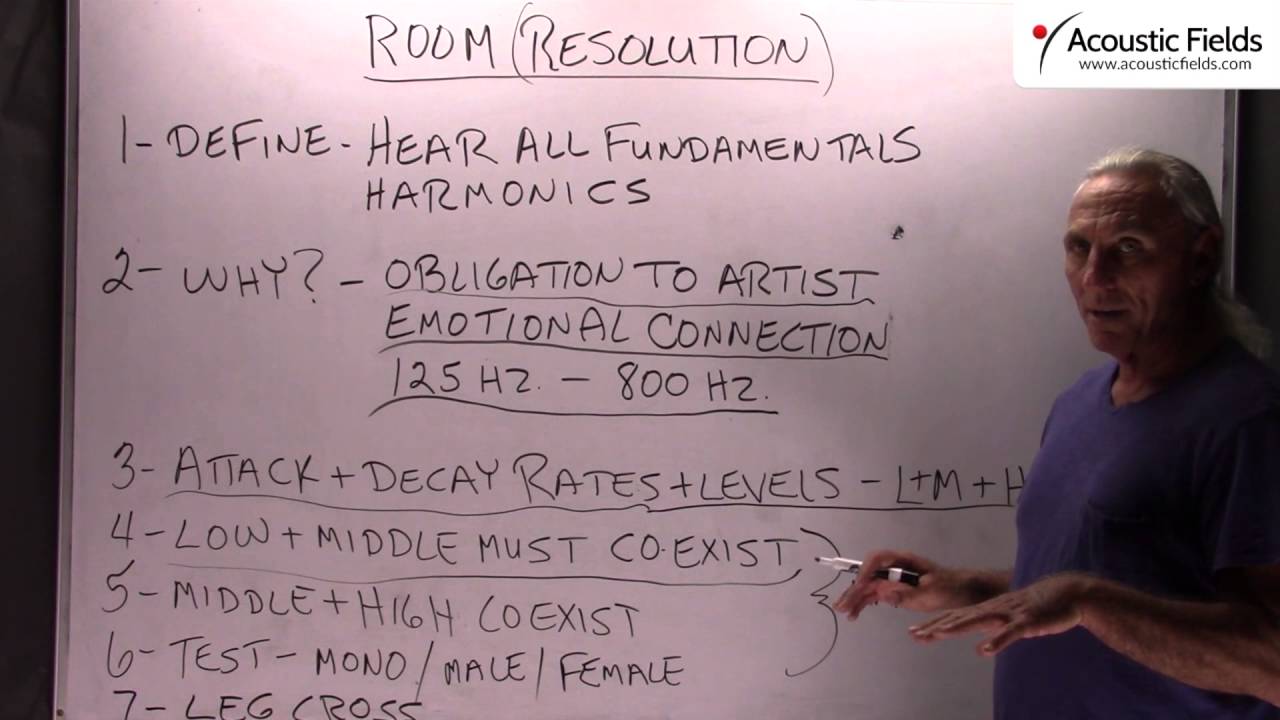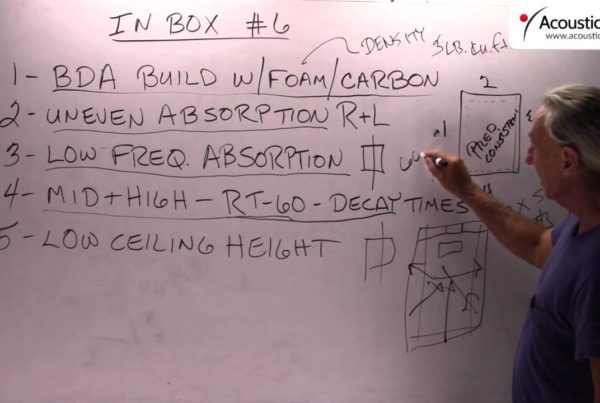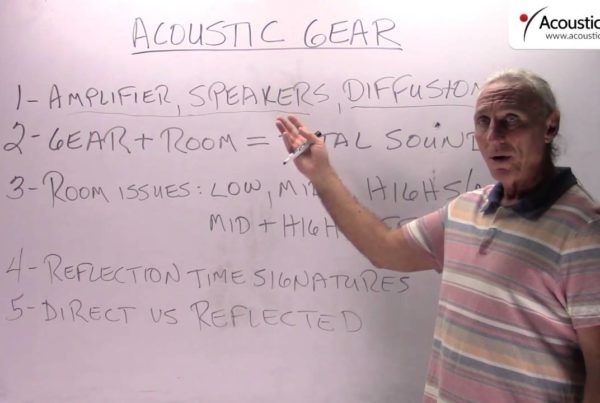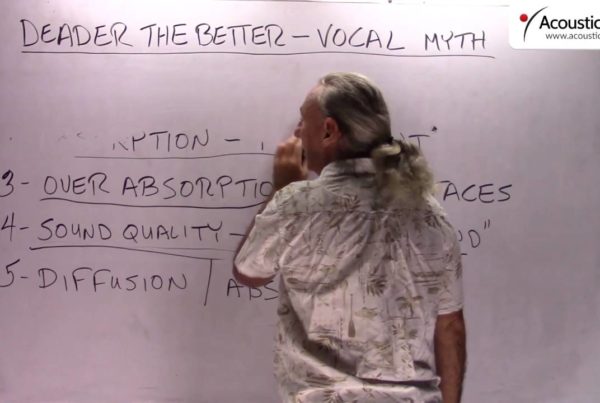Today we’re going to talk about room resolution. And we get a lot of comments and emails and stuff about resolution, you know what does the term resolution mean? Obviously to resolve, to be able to hear everything.
So we want to hear all the fundamentals and the harmonics that are in our music and we need to do that for a couple of reasons. One, I think we have an obligation to the artist and the engineers who put so much time and effort into a song. Since I’ve been in the professional market for the last year and a half or so I see what these engineers and artists go through to create a song. And then I hear that song being played in a car or someplace like that and half the content – well, that could be an exaggeration but a lot of the content is simply not audible because of room size, volume, shape, speakers, amplifiers, all kinds of issues involved in the production chain, in the communication chain before it even gets to our ears.
So and I think we have an obligation to hear everything that’s been put into that album or CD. And why? Because you know why is the artist doing a song? Well, they’re writing and singing about their emotions. So we want to connect to those emotions and I think if you look at the artist that you work with or that you like and you hear a lot about you get that emotional connection to their music. So and it’s particularly strong in the 125 Hz to 800 Hz cycle range where vocals are. So you want to make sure that you got great definition and resolution for the vocals.
How do we get that? Well, first thing we have to do is control the attack and the decay rates for both low, middle and high frequencies because you don’t want one frequency group overlapping another frequency group. You want definition, separation, you want everything to be heard. So attack and decay rates are really, really critical in your room. And that’s why I created that carbon technology because I’ve never been in a room where the low end and the mids and the highs were all balanced out unless it’s a good sized room. So the carbon technology helps you do that and in a nice balance between the lows, mids and the highs.
Now, how do we listen to the energy that comes from a song? Well, we have a coexistence that must occur between the low, middle and high frequency. The low provides the foundation. It must have the same attack and decay rates or even better attack and decay rates than the mids and the highs. So you have to get a balance there. There’s a balance that must go on.
So I like in attack and decay rates and this coexistence this balance as a wave of water. And the wave has a peak and then it washes down and you have all this whitewater. So the wave is the low frequency and the whitewater is the mids and the highs. So everything rides upon the lows and washes and cycles. So you must have a coexistence of all those and you have to be able to hear that and you have to be able to sense that. And that’s where all of these variables here come into play: the connection, the respect for the artist and things like that.
So we have to have this coexistence, this balance between all these 3 types of energy and it’s almost like 3 people in a marriage which is almost impossible. Two people in a marriage is almost impossible statistically. So we have this situation where we have to balance it out and it takes special approaches, it takes special technology and it takes a special concern and dedication to that process, okay?
How do we test for that? What we do in our studios, people ask all the time, we use motor recordings, especially voice. We have this thing in the studio that we do. For male voice we say oh, how good is the resolution, can we hear what he had for a breakfast? That’s kind of the joke we have in the studio. And then with the female obviously since we’re all men we want to know what she’s wearing. So a little bit sexist but… It goes to this emotional connection, it goes to the resolution, it goes to definition, it goes to all of these areas.
And then we do something kind of special in our studio. Our studio has such high resolution and such the ability to hear everything that if you cross your legs at the listening position you’ll hear a difference, okay? You’ll hear that right or left leg, higher than the other one, you’ll hear that. I mean that’s the type of resolution we have in our studio. So try it in your room. If you don’t hear any difference when you cross your leg and you’re listening to music you probably don’t have as high resolution in your room as we do. And maybe that’s okay for you but not for us. We want to be able to hear everything and obviously that’s our business.
So I hope this helps. Room resolution, the ability to hear everything, both the fundamentals and the harmonics. So we get the respect to the artist and emotional connection to them. Thank you.
—
This is an unedited transcript from our video series from Acoustic Fields. There will be some errors in grammar and sentence structure that occur during this translation process.
For complete understanding and comprehension, please view the video which is included in this text. For any additional information regarding this topic or others relating to room acoustics, please contact us directly at:
P: 520 – 392 – 9486







